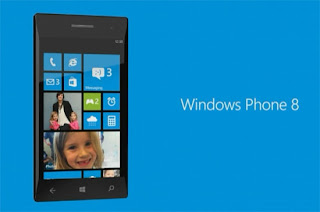Leading the additions to Windows Phone 8 include:
New Start screen, turn-by-turn navigation and Skype integration. The home
screen or Start Screen, which has rectangular tiles to represent apps, will now
allow users to change the tile sizes if they're using the phone for many things
at the same time.
Microsoft is making Windows Phone 8 even
more personal, with a new palette of theme colors and three sizes of Live
Tiles, all of which are under users’ control. As Live Tiles are one of the
things current owners really love about their Windows Phones, Microsoft makes
them even more flexible and unique. The bellow short video shows the new Start
screen in action.
Microsoft is also putting its Skype
acquisition to good use in the forthcoming software. Skype and other Voice Over
IP (VoIP) services will integrate right into the phone dialer and People or
contacts apps. Skype's CEO, Tony Bates, hinted that Skype would also be
integrated into Windows 8.
And there's another partnership at work in
Windows Phone 8 -- the one between Microsoft and Nokia. The two companies
worked closely on Nokia's new Lumia handsets, including the Lumia 900; now they
are bringing Nokia's mapping technology to the operating system, including
offline maps and turn-by-turn navigation.
Other key features of Windows Phone 8:
* Multi-core
processor support: As reviewers have noted, Windows
Phone runs buttery smooth on phones with a single processor. But piggybacking
on the Windows core provides support for multiple cores—so we’re ready for
whatever hardware makers dream up.
* Bigger,
sharper screens: Windows Phone 8 supports two new
screen resolutions—1280x768 and 1280x720, opening the door to amazing new
handsets with high-definition 720p displays. This would mean that users would
have more flexible options to watch HD videos on Windows Phone 8 smartphones.
* More
flexible storage: Windows Phone 8 supports
removable MicroSD cards, so you can stuff your phone with extra photos, music,
and whatever else is important to you, and then easily move it all onto your
PC.
* NFC
wireless sharing: If you haven’t heard the term
“NFC” yet, I’m betting you soon will. This emerging wireless technology lets
phones share things over short distances. In Windows Phone 8, it helps make
sharing photos, Office docs, and contact info easier—just tap your phone
another NFC-equipped device. How cool is that?
* Internet
Explorer 10: The next version of Windows Phone
comes with the same web browsing engine that’s headed for Window 8 PCs and
tablets. IE10 is faster and more secure, with advanced anti-phishing features
like SmartScreen Filter to block dangerous websites and malware.
* Wallet: Windows Phone 8’s new digital Wallet feature does two great
things. It can keep debit and credit cards, coupons, boarding passes, and other
important info right at your fingertips. And when paired with a secure SIM from
your carrier, you can also pay for things with a tap of your phone at
compatible checkout counters.
* Better
maps and directions: Windows Phone 8 builds in
Nokia mapping as part of the platform. Our partnership will provide more
detailed maps and turn-by-turn directions in many countries, plus the ability
to store maps offline on your phone so you can work with maps without a data
connection.
* Cooler
apps and games: Basing Windows Phone 8 on the
Windows core will unleash a new wave of amazing apps and especially games, for
reasons I’ll touch on in a moment.
Microsoft
did not disclose when Windows Phone 8 would be available and start shipping on
phones. It did say that those with Windows Phone devices now won't be able to
upgrade to the new operating system. The first wave of Windows Phone 8 phones
will be made by Nokia, Samsung, and HTC.

No comments:
Post a Comment